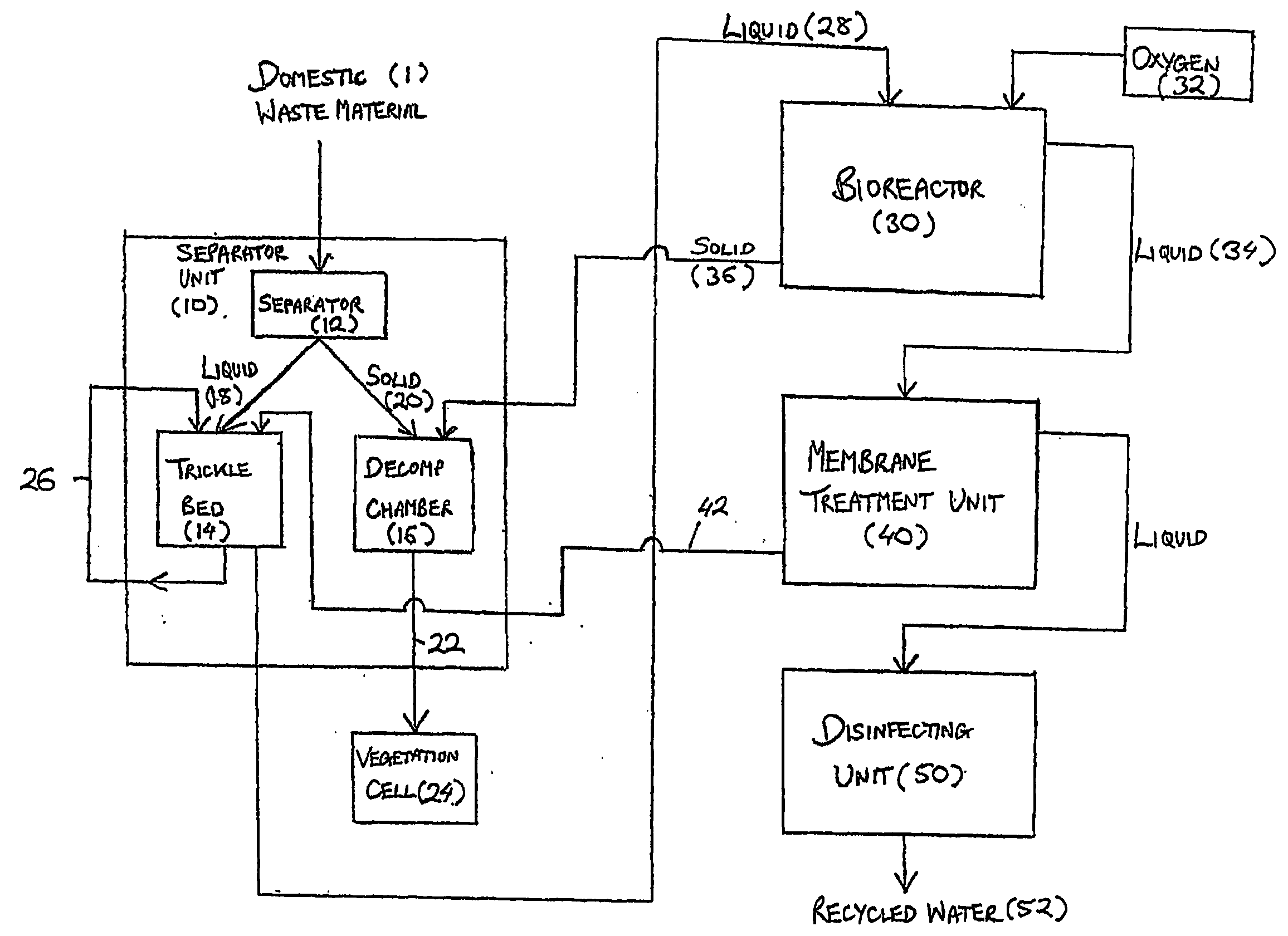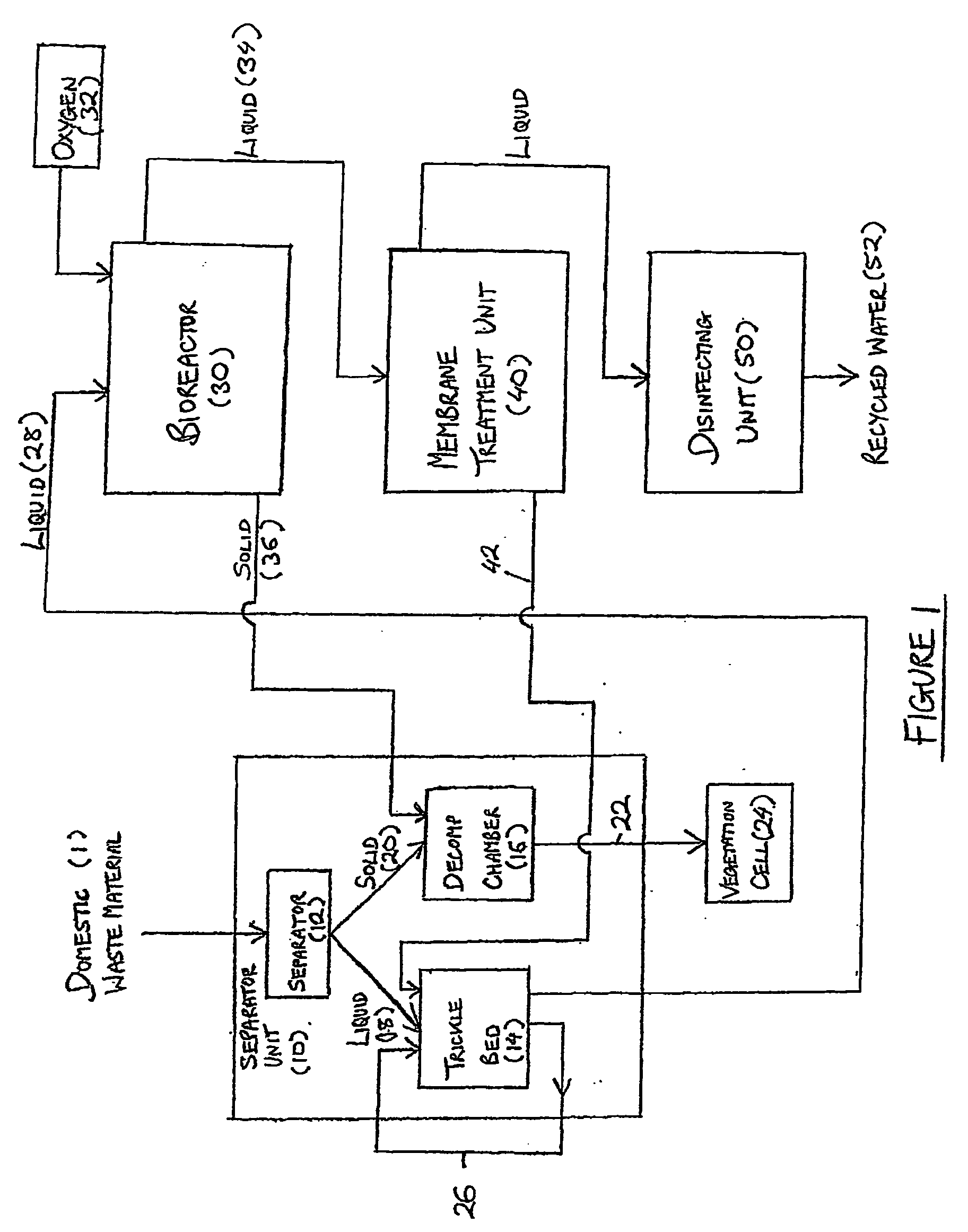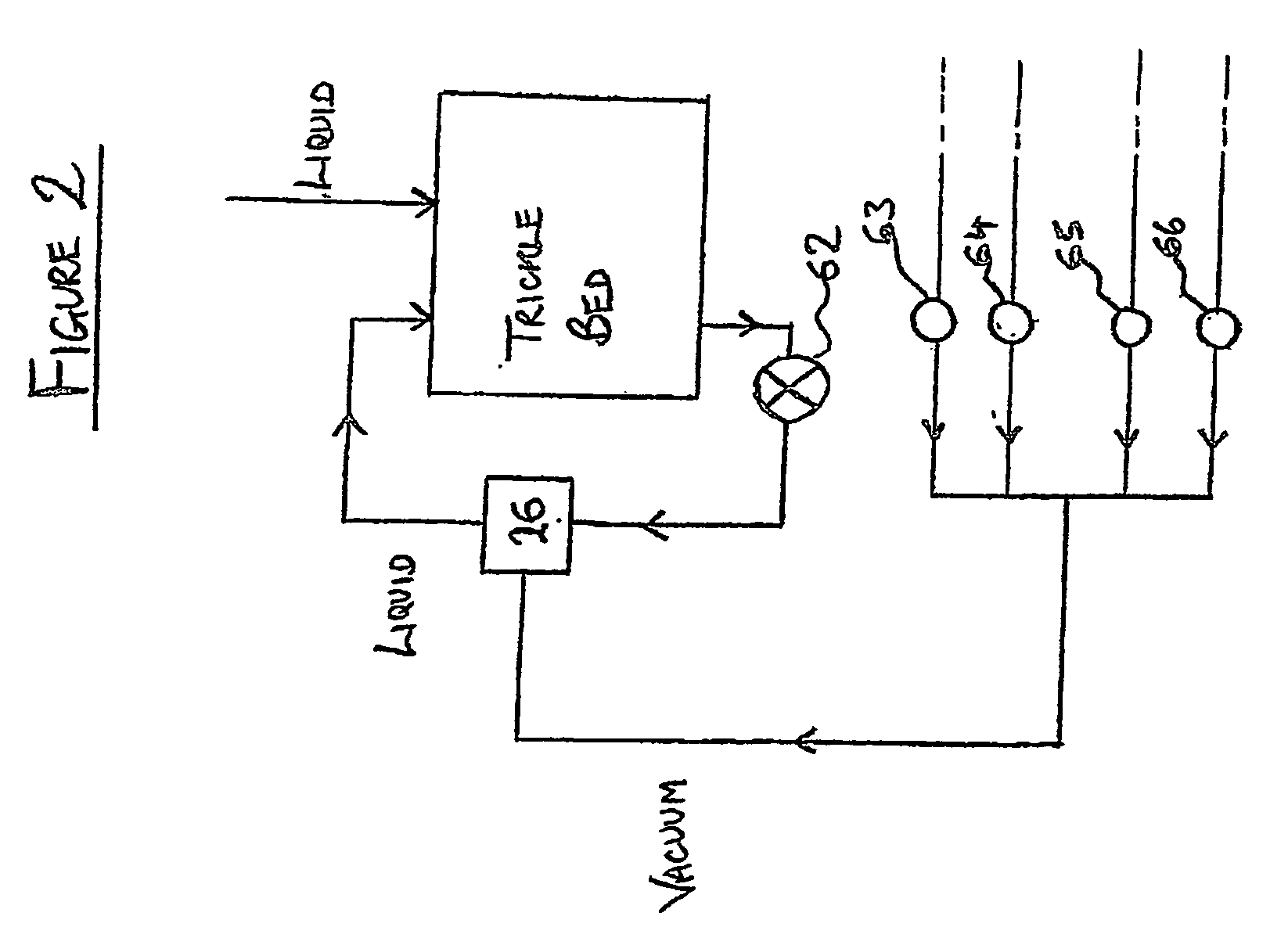Apparatus and method for the treatment of waste
a technology of waste treatment and apparatus, applied in the direction of water/sludge/sewage treatment, specific water treatment objectives, mixing methods, etc., can solve the problems of contaminating water supplies, affecting the health of inhabitants, and growing problems in the management and treatment of domestic sewage and other wastes, so as to achieve maximum digestion
- Summary
- Abstract
- Description
- Claims
- Application Information
AI Technical Summary
Benefits of technology
Problems solved by technology
Method used
Image
Examples
Embodiment Construction
[0096] Referring to FIG. 1, there is a shown a waste treatment system having a separator unit 10, a bioreactor 30, a membrane treatment unit 40 and a disinfecting unit 50.
[0097] Domestic waste material 1 enters the separator unit 10. The separator unit comprises a separator 12, trickle bed 14 and decomposition chamber 16.
[0098] The waste material 1 enters the separator 12 and is divided into liquid stream 18 and solid stream 20.
[0099] The solids 20 are fed into the decomposition chamber 16 where they decompose under natural aerobic processes, for example, on a series of mesh screens. A combination of living organisms on the mesh screens aid these decomposition processes. Solids which have broken down in the decomposition chamber 16 slowly fall to the bottom of the chamber through decreasing sized mesh screens. The mesh screens are configured to prevent untreated solids from moving directly to the bottom of the decomposition chamber 16. The treated solids 22 from the decomposition...
PUM
| Property | Measurement | Unit |
|---|---|---|
| Density | aaaaa | aaaaa |
| Density | aaaaa | aaaaa |
| Fraction | aaaaa | aaaaa |
Abstract
Description
Claims
Application Information
 Login to View More
Login to View More - R&D
- Intellectual Property
- Life Sciences
- Materials
- Tech Scout
- Unparalleled Data Quality
- Higher Quality Content
- 60% Fewer Hallucinations
Browse by: Latest US Patents, China's latest patents, Technical Efficacy Thesaurus, Application Domain, Technology Topic, Popular Technical Reports.
© 2025 PatSnap. All rights reserved.Legal|Privacy policy|Modern Slavery Act Transparency Statement|Sitemap|About US| Contact US: help@patsnap.com



